How does a music loving textile artist choose between her two obsessions? She doesn’t – she combines them!
That was the no-brainer for Jane Sanders of Newcastle Upon Tyne, UK. Using machine and hand stitch, she creates pictures of iconic musicians on her vintage sewing machine, inspired by her own love of pop culture and the audiences’ love of their musical heroes. She employs techniques such as applique, beading and painting as part of her textile art.
Having been brought up with her mother’s Singer Fashion Mate sewing machine in the 1970s, Jane acquired one herself and has been using it for over 25 years. She sews at her kitchen table which inspired her social media name – stitchin in the kitchen.
Jane started her art training at The Salisbury College of Art and Design, and completed it with a degree in Contemporary Arts Practice from Northumbria University. Her work has been included in many group shows, and she has also had two solo shows in the North East. She has had portraits commissioned all over the world, and they have featured widely in the media.
She has written articles on contemporary textiles for craft magazines – both on her own and other artists’ textile work – including Mojo music magazine, Be Creative magazine, The Irish Museum of Rock, BBC Look North, The Daily Express and Talk Radio.
Jane is a member of The Society for Embroidered Work. (S.E.W.) and in 2020 has a new solo show in Newcastle Upon Tyne.
In this interview, you’ll learn about the unconventional materials that Jane chooses to match the unconventional personalities she depicts, and how she builds a good hairstyle to bring a piece alive. Find out how she has developed the twee applique skills, that she learned as a child, to make badass contemporary textile portraits of rock stars.
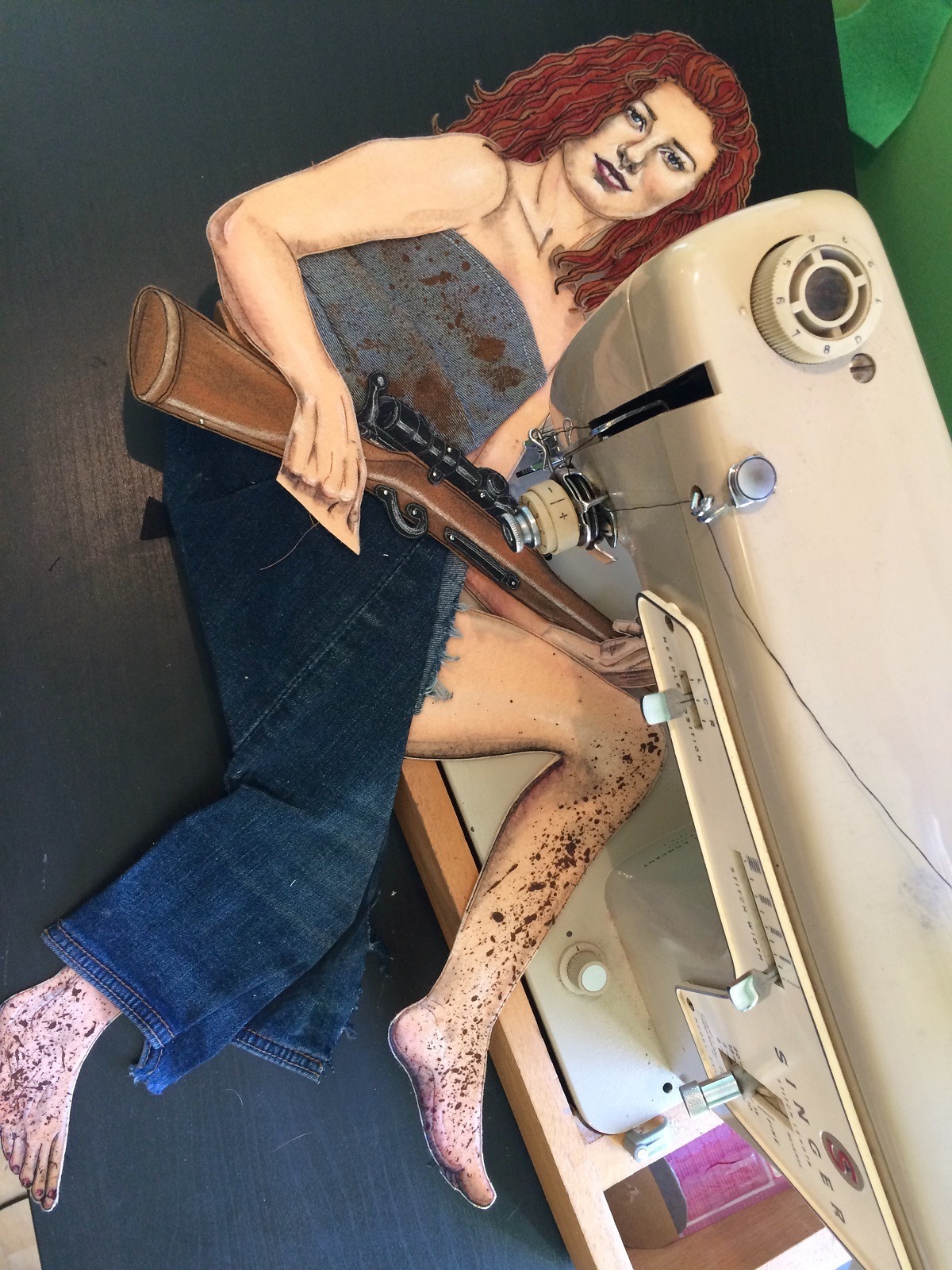
“Painting” on my Singer
TextileArtist.org: What initially attracted you to textiles as a medium? How was your imagination captured?
Jane Sanders: Initially, I studied as a painter, and through this training, I learnt the techniques of portraiture. I have enjoyed sewing all my life, and a few years ago I decided to try to sew a portrait. My other obsession has always been music; so I just combined all my loves and started “painting” pictures of rock stars on my 1960’s Singer sewing machine.
As an artist, I think you are always trying to create something that you have never seen anywhere before, and I believe that is what I do.
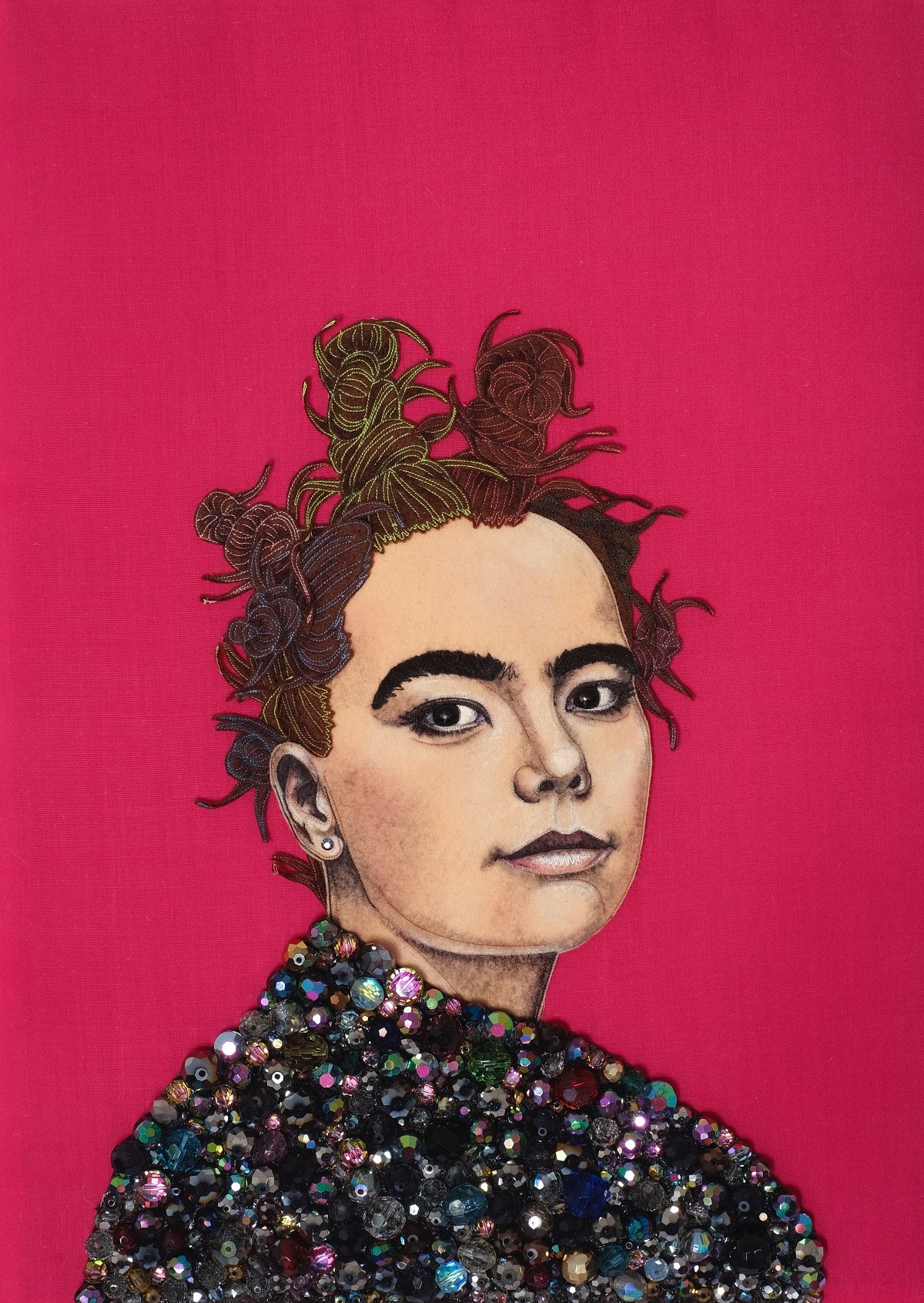
What or who were your early influences and how has your life/upbringing influenced your work?
I grew up in the ’70s/’80’s when handicrafts were really popular. There was always some kind of project going on in our house, especially needle-based.
My mother was keen to introduce me to the world of patchwork, knitting, applique, macrame etc. But it was her black and gold Singer sewing machine, converted from manual to electric with a motor strapped on, that I was really interested in. I remember being taught to thread it, fill a bobbin and work the peddle to sew it at a very young age. Imagine a 7 year old left nowadays with such an item? Thank goodness for the lack of health and safety in those days!
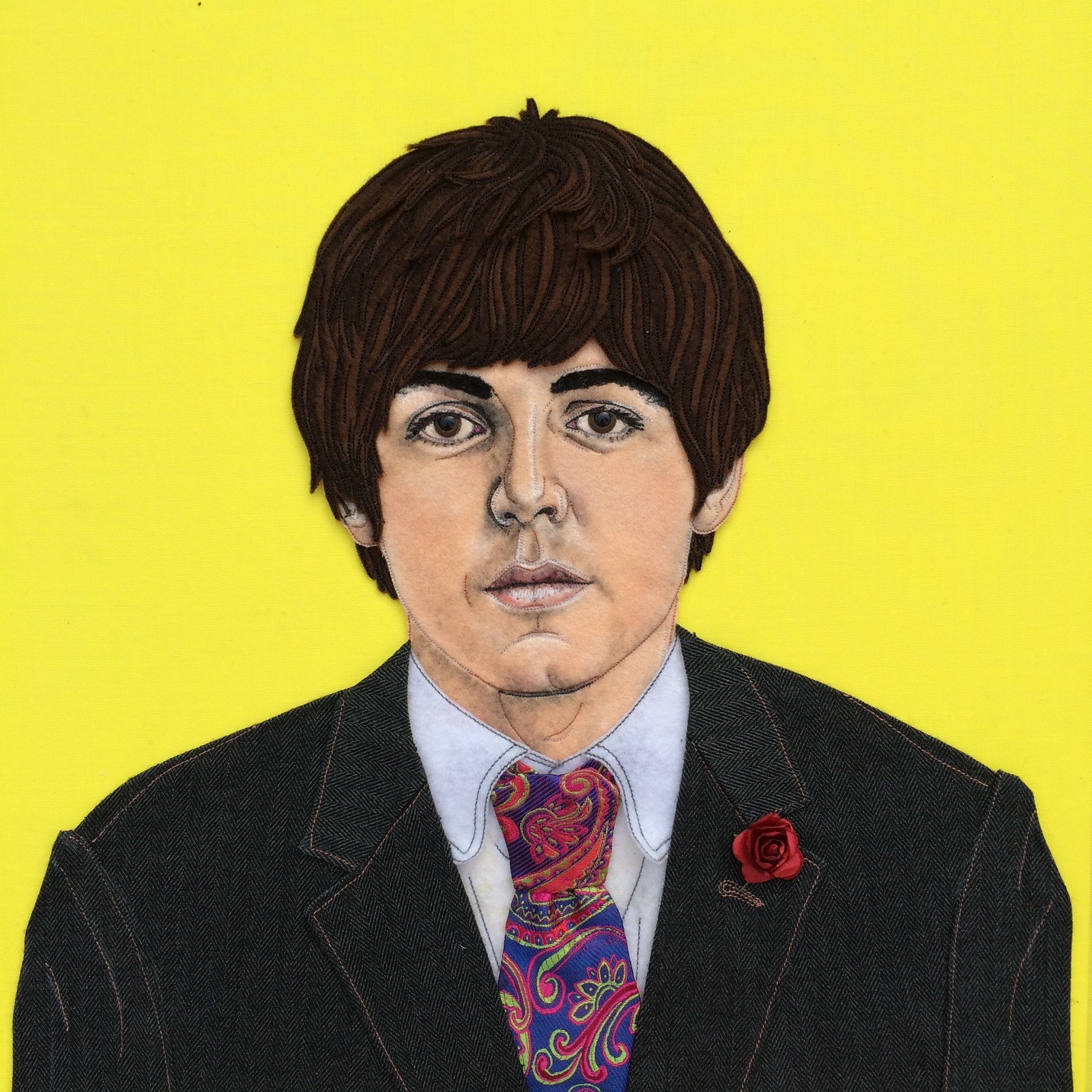
What was your route to becoming an artist?
I went to The Salisbury College of Art and Technology to do a diploma in Art and Design in 1991, then onto Northumbria University to complete my degree in Contemporary Art Practice.
I’ve been practising art in between family life and work ever since. Income from artwork is notoriously unreliable, and as the breadwinner of the family I clean houses in the day, then at night and weekends I create my portraits.

Sewing with paper
Tell us about your process from conception to creation
I am always excited to start a new portrait. I have to use photographs as a starting point, but I am keen not to just copy them.
I try to interpret the image in a way, using different materials and composition to add to the narrative of the piece. I draw an initial plan onto tracing paper, thinking about the lines I will need to machine. This is then transferred to felt; I use a lot of felt as it comes in such vibrant colours, is strong, and does not fray. Following my guidelines, I build up the form of the face with different coloured threads.
I blow up small sections of the original photo on my phone as I go, in order to capture meticulous details I want to add in. To add realism to the face I shade it and add glass eyes, filled to the correct shape.
I love sewing hair, and I sew it in many different sections, before constructing it with the help of the drawing. Musicians are often visually defined by their hairstyles and, if you get it right, the piece comes alive!
Following this, I decide how I want to present the subject’s clothes. I like experimenting with different materials and I don’t think sewing should be confined to fabric. In the past, I have sewn with newspaper, cigarette cards, bible pages, etc
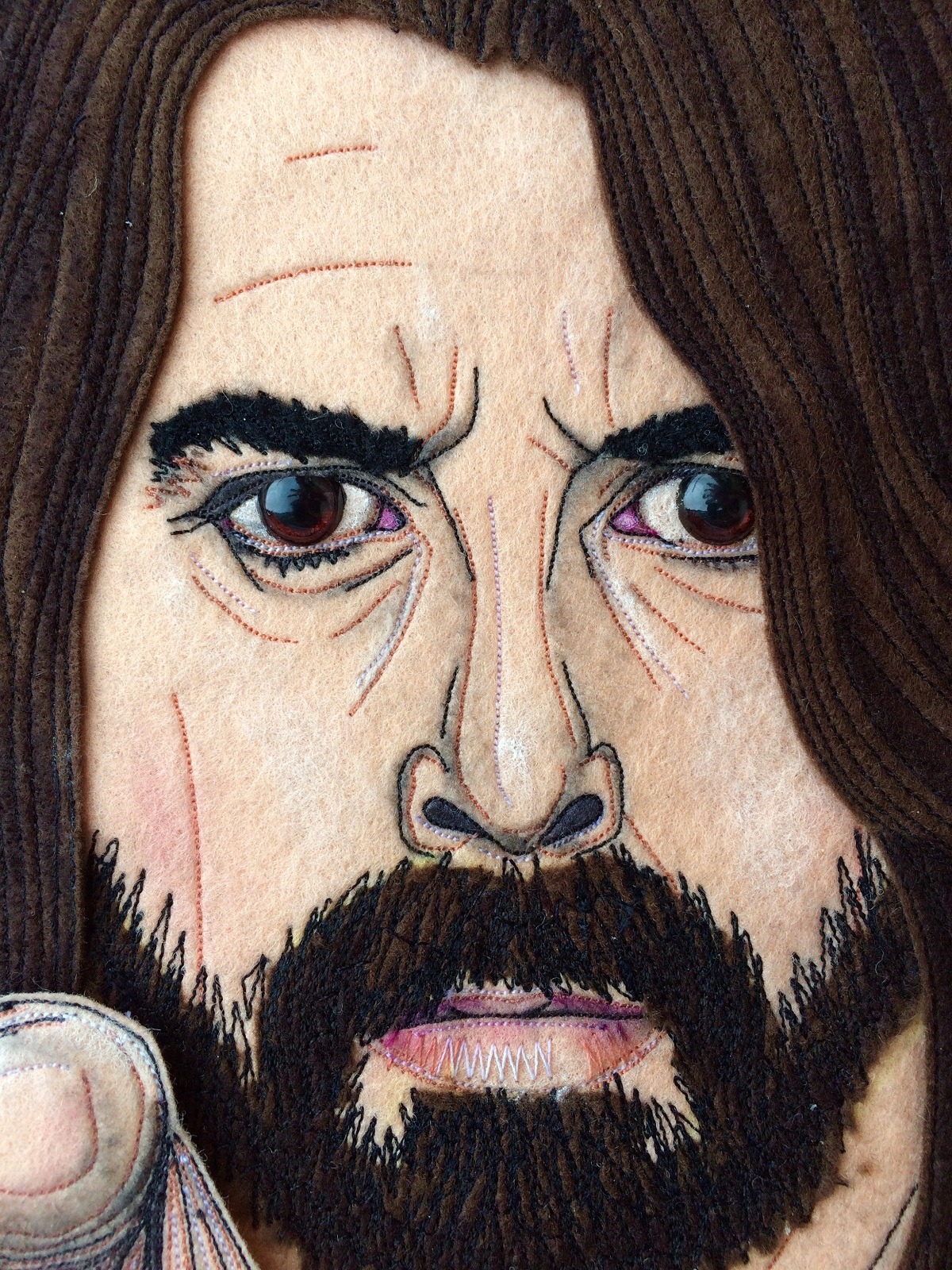
Tell us a bit about your chosen techniques and how you use them
I think the closest I could describe my work is “rock n roll applique”! I take the traditional, quite domestic sewing and crafting skills I learnt as a kid, and shake them up a bit. By tweaking composition, colour, and subject matter, the twee applique owl cushion cover that I would have been encouraged to sew, can transform into a badass contemporary textile portrait of Dave Grohl.
I keep all my materials in the kitchen, where I sew; I have boxes of beads and haberdashery stacked under my sewing machine table. I would like to say that all my threads are organised by colour and size but this would be a lie!! They are kept in a drawer and it may look chaotic to others but I know where everything is!
My felt is kept in a big pile next to where I work. It’s kind of like an avalanche; if I need a pink and pull it out, the rest will tumble down!! I have tried working in a more organised way, but it always reverts to this jumble, so I think – if you can’t beat it join it.

What currently inspires you?
I am currently inspired by the wonderful textile community on Instagram. It is such a great place to converse with like-minded artists, and it is fantastic to see other people’s work developing. Instagram provides good networking opportunities, and a real platform to showcase your work.
Many of the contemporary textile artists I admire are from other countries and its a great way to link with them and see close-ups of their work and watch how they sew and construct from start to finish. Most artists work in solitude, so it is good to feel part of a collective movement of stitch based artists. I often ask for feedback and give and receive encouragement on projects.
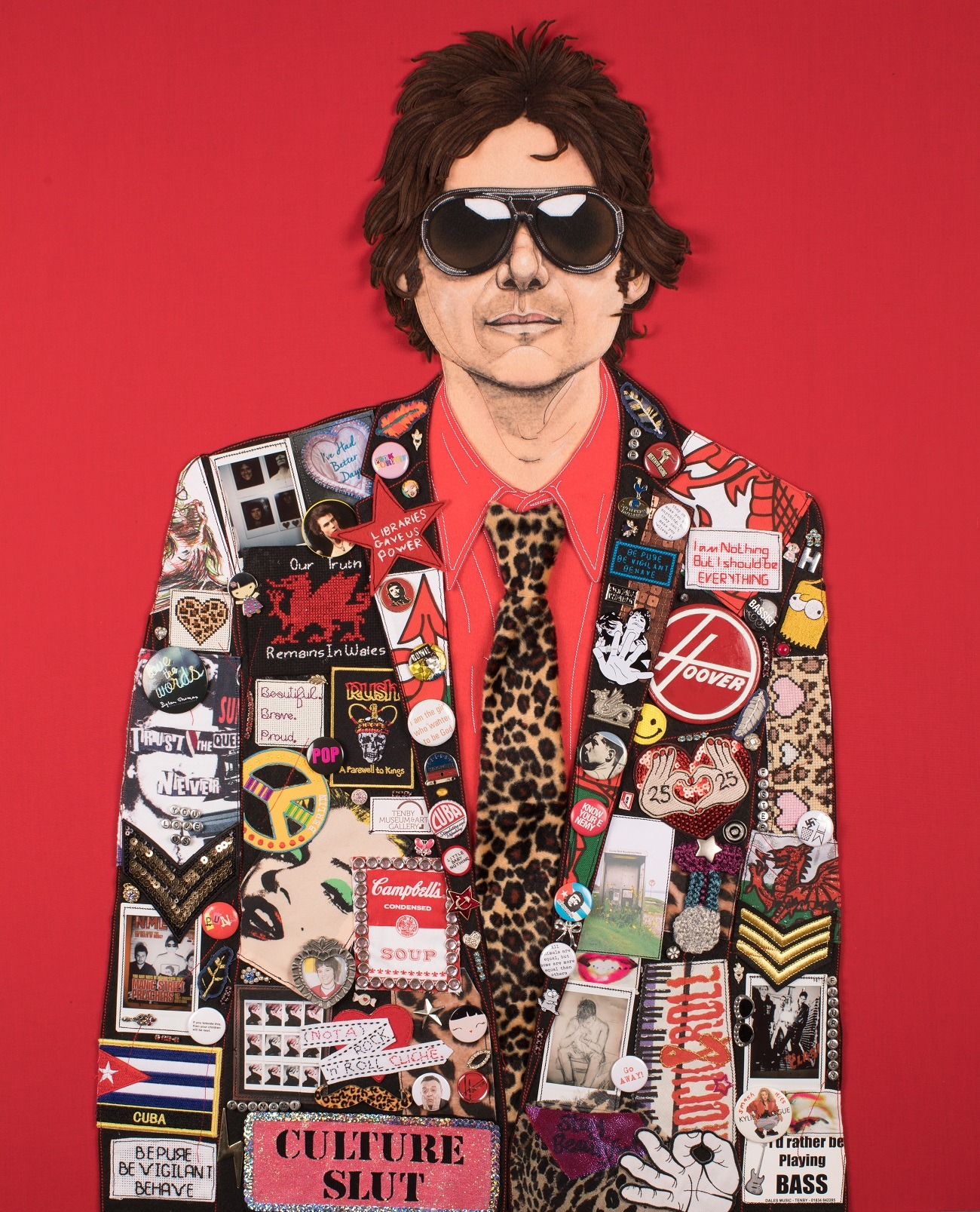
Cutting up the bed sheets
Tell us about a piece of your work that holds particularly fond memories and why?
I wanted to sew a portrait of Nicky Wire from The Manic Street Preachers. I was always intrigued by the jackets he wore, which are adorned with patches and badges that fans send him.
I hatched a plan to sew a picture of Nicky with a plain black jacket, and would ask fans of the band to make me something to sew on. After advertising this idea on Manics fan forums, I was inundated with the most beautiful hand made items. They included intricate cross-stitched lyrics, sequinned patches, embroidery and finely painted badges. These were sent from all over the world, from Dublin to Hawaii!
The result was a striking, life-sized portrait of Nicky Wire, in the jacket that I had constructed from the handcrafted donation sent by Manic Street Preachers fans. This picture is so special as I feel it was made by a collective, a huge joint effort. I was deeply touched that people would take the time to make and send some precious and personal for the project; it meant I was trusted as an artist.

How has your work developed since you began and how do you see it evolving in the future?
Since I started sewing portraits I have fine-tuned my stitching. After all, the Singer Fashion Mate is a machine that has to be mastered. Also, I feel I have become more experimental with colour, size and composition. When I first started these picture they were all roughly A3 size, but now I am not afraid to work in miniature or up to 1 metre, each is just as challenging.
I cannot wait to continue to experiment with sewing unconventional materials and unconventional people. No subject is more exciting to me than people that make music. I always listen to the music of the person I am creating, I feel it is as if I am somehow sewing their music into the piece!
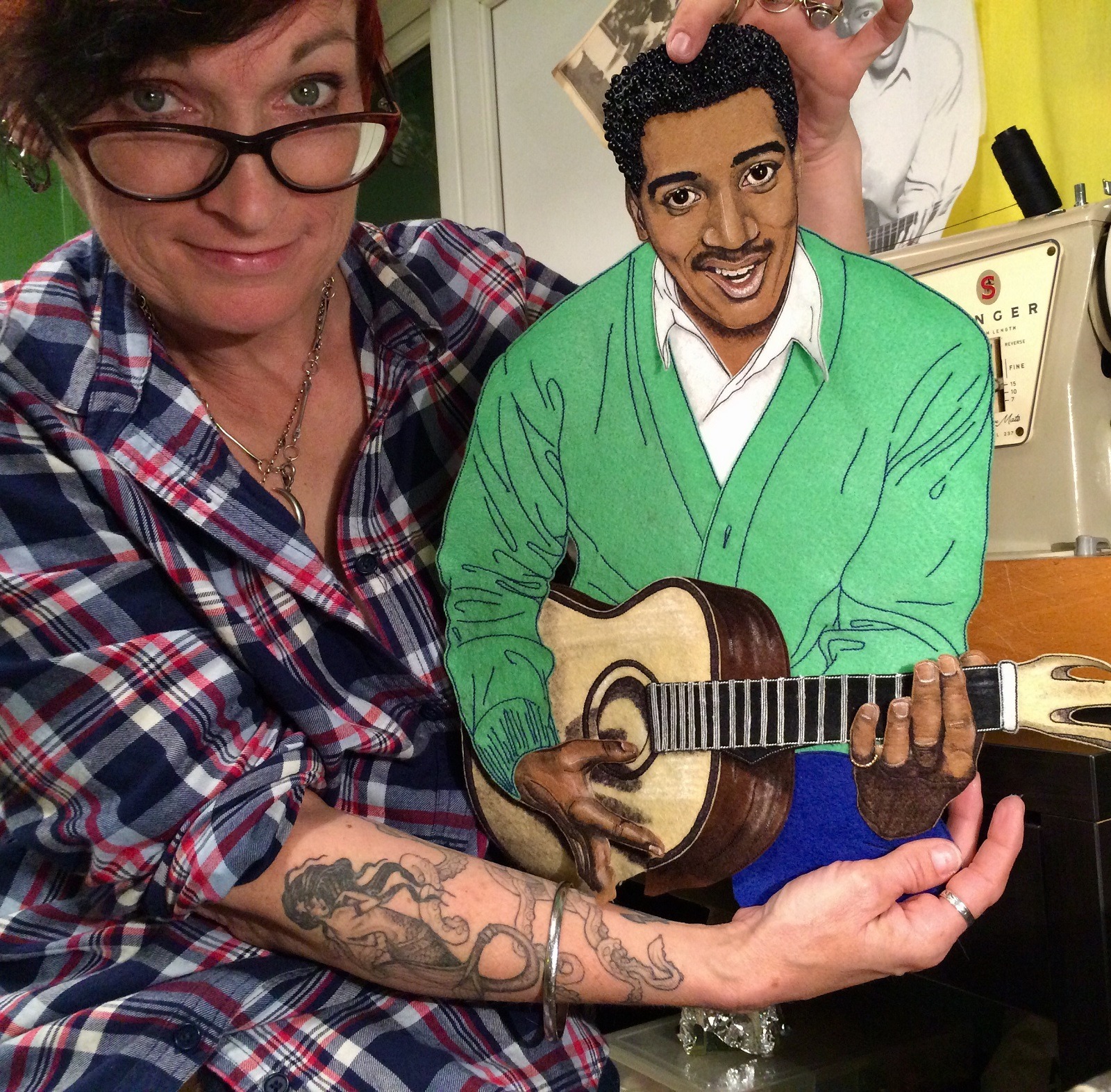
What advice would you give to an aspiring textile artist?
The main advice I would give an aspiring textile artist is: do not ever think that you need a big space in which to create. I make my work on a little table in the kitchen surrounded by mess, dogs, and the usual chaos of family life.
Also, textiles are a great medium to work in if you don’t have much money. Work can be made really inexpensively, and fabric can be recycled from all over the place. I often use old clothes, and have been known to cut up bedsheets! I get a lot of materials from charity shops and markets.
Lastly, choose a subject matter that really means something to you. Sew what you love, and love what you sew!
For more information visit www.janesanders.co.uk
Let us know what you’ve enjoyed about this article by leaving a comment below.

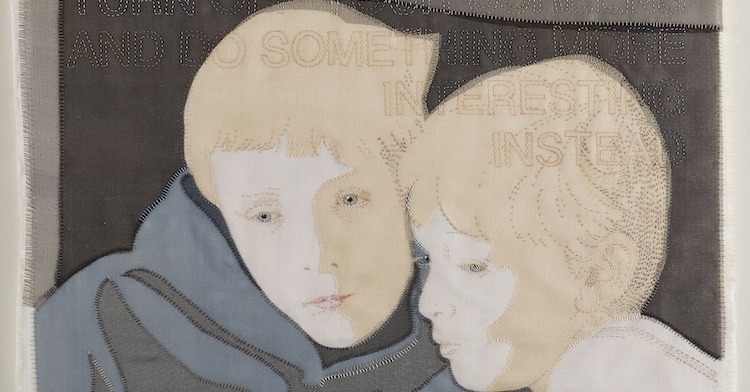
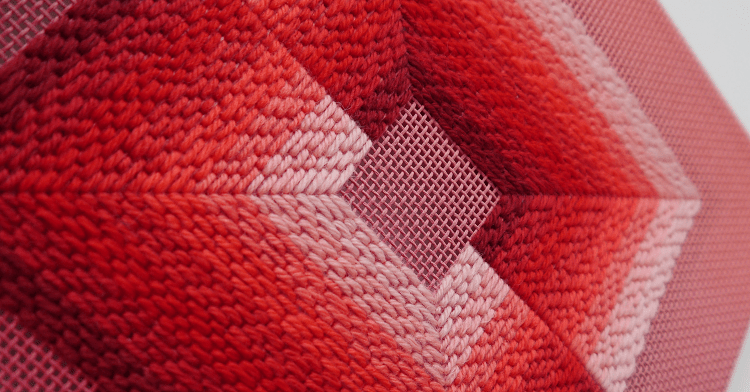
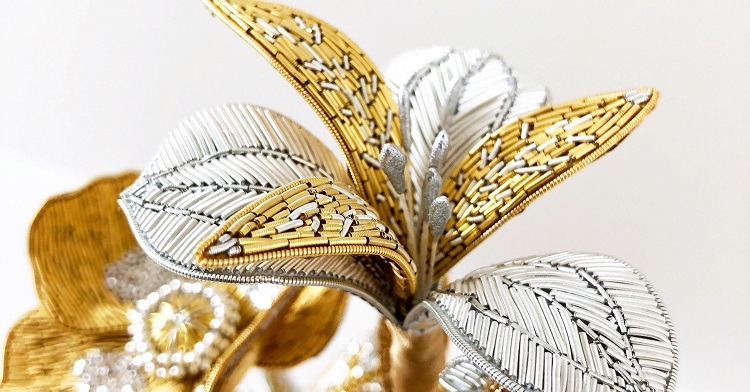
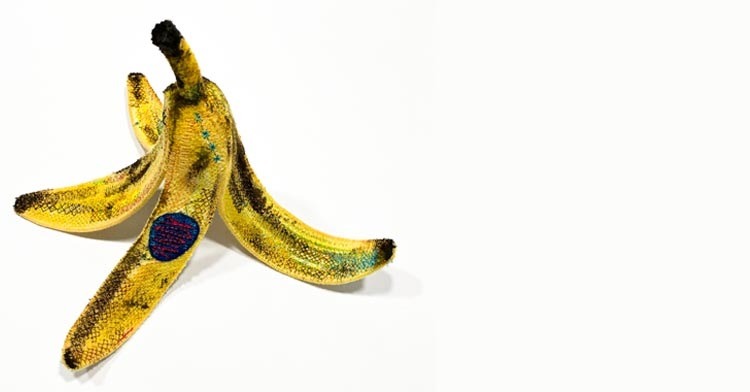
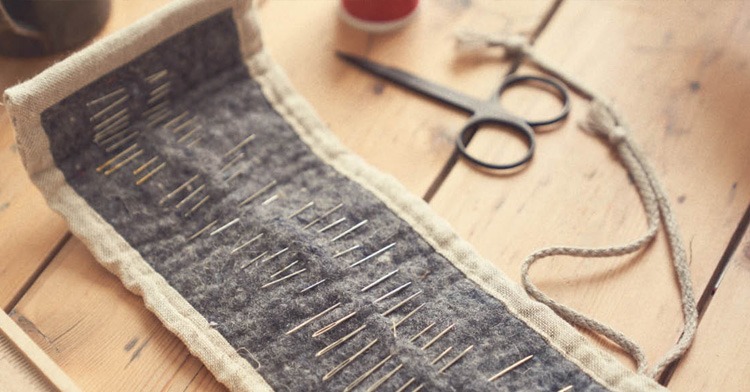
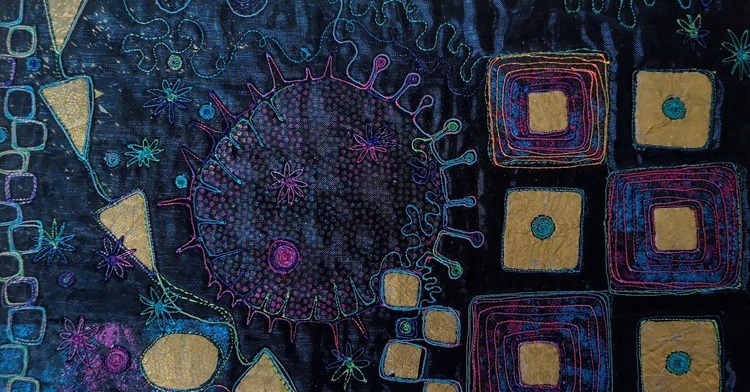
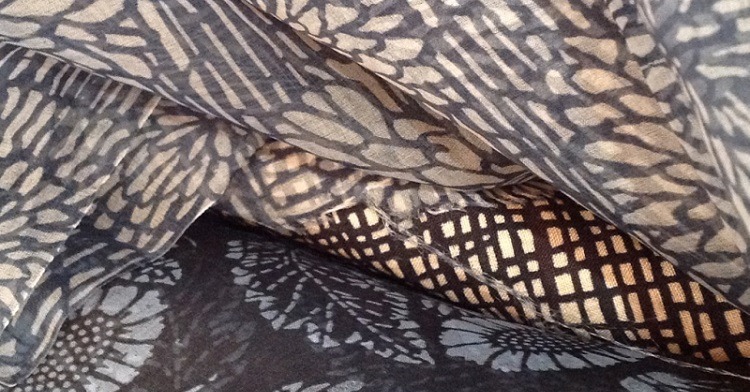

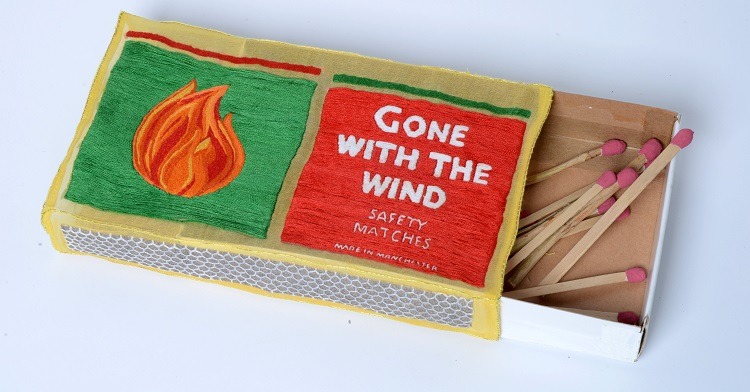
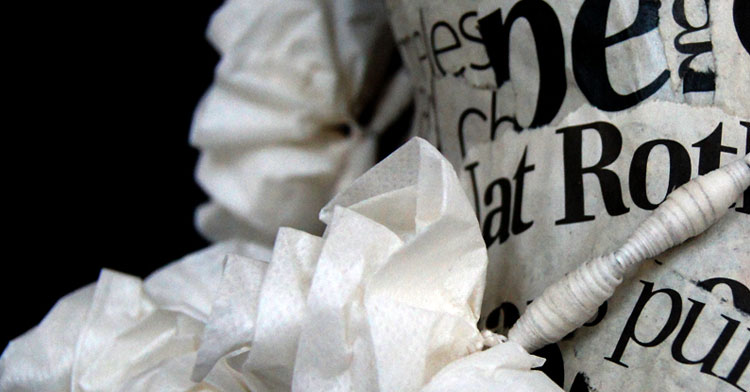
23 comments
Tamar Drucker
Hi Jane, your work is very inspiring! Would love to hear what you use for shading the faces with, is it acrylic? shiva paints?,do you mount your portraits on canvas? Thank you.
Alice Chambers
Thank you for the article on Jane Sanders, it was a great article. I am a textile artist who also has to work, converted a bedroom into my ’studio’ and am so encouraged and inspired by Jane.
Barbara Bexley
‘Sew what you love and love what you sew’. What better advice could there be? Thank you, Jane.
Bernadette coulom
Cela donne tant d’espoir et de joie !!!
Bravo !!! Merci.
Jane
Merci!
Bev White
Beautiful artwork…wishing you continued success!
Jane
Thankyou so much!
Jess R
These are fab and so unique. It has inspired me to think about felt differently! Thanks for sharing your story.
Jane Sanders
Thanks Jess x
John Havergal
Dear Jane, our new agency represents textile artists to a wide range of commercial art buyers in the advertising, design, publishing and government agency fields. Given your art’s excellence and versatility we think given time we can land you well paid and properly by-lined commissions and publicity.
Congratulations on your achievement.
Orchard Studio
jane sanders
hi John , i’d be interested to hear more about your agency. You can contact me directly through my website if you want. http://www.janesanders.co.uk
all the best
jane
Veronica Gates
Great article and even better artwork. Wonderful work. Thank you for the encouragement to work where you can!
Jane Sanders
Thanks so much! Yes, most people don’t have much spare space do they? But you can make things even in the smallest of spaces. Good luck!
Suzanne Armstrong
These artworks are quite lovely. I would love to see them in person.
I like to figure out how things are done, so I need to get close.
They look so lifelike.
The Nicky Wire collaborative is outstanding.
It’s great the way people help, right?
Thank you!
Jane Sanders
Thanks! Yes I have a show coming up March 2020 in Newcastle, on all my social media. Yes the Wire piece is so special xx
Lesley Jackson
Really interesting. I’m intrigued by the use of felt in portrait making and would like to know more about that.
Jane Sanders
Hi Lesley, yes I love using felt. It’s so tough and versatile. It can also take on the appearance of skin. I use lots of it
Jana Jopson
Simply amazing work! What a special niche with universal appeal.
Jane Sanders
Thanks so much!
Sarah Lane
Thank you for the article, love the use of line with colour to achieve the realism in the faces. Especially like Dave Grohl.
I’m currently ( literally) just clearing a tiny space in the lounge to create my ‘space’
Becoming creatively frustrated!
Dream of having my sewing machine out all the time. Just a pile of rubbish to clear up. Thank you. Interesting reading.
Thank you for the inspiration.
Jane Sanders
That’s great! Get that machine out! You can always make room for it! Xx
Sheila Laurens
Wow.. this work is amazing! It looks so realistic. Very clever
Jane sanders
Thanks so much!